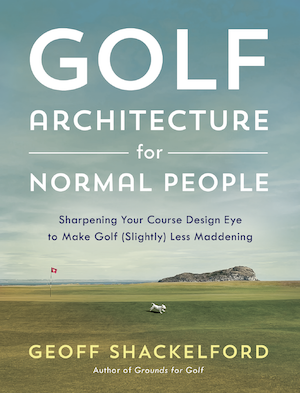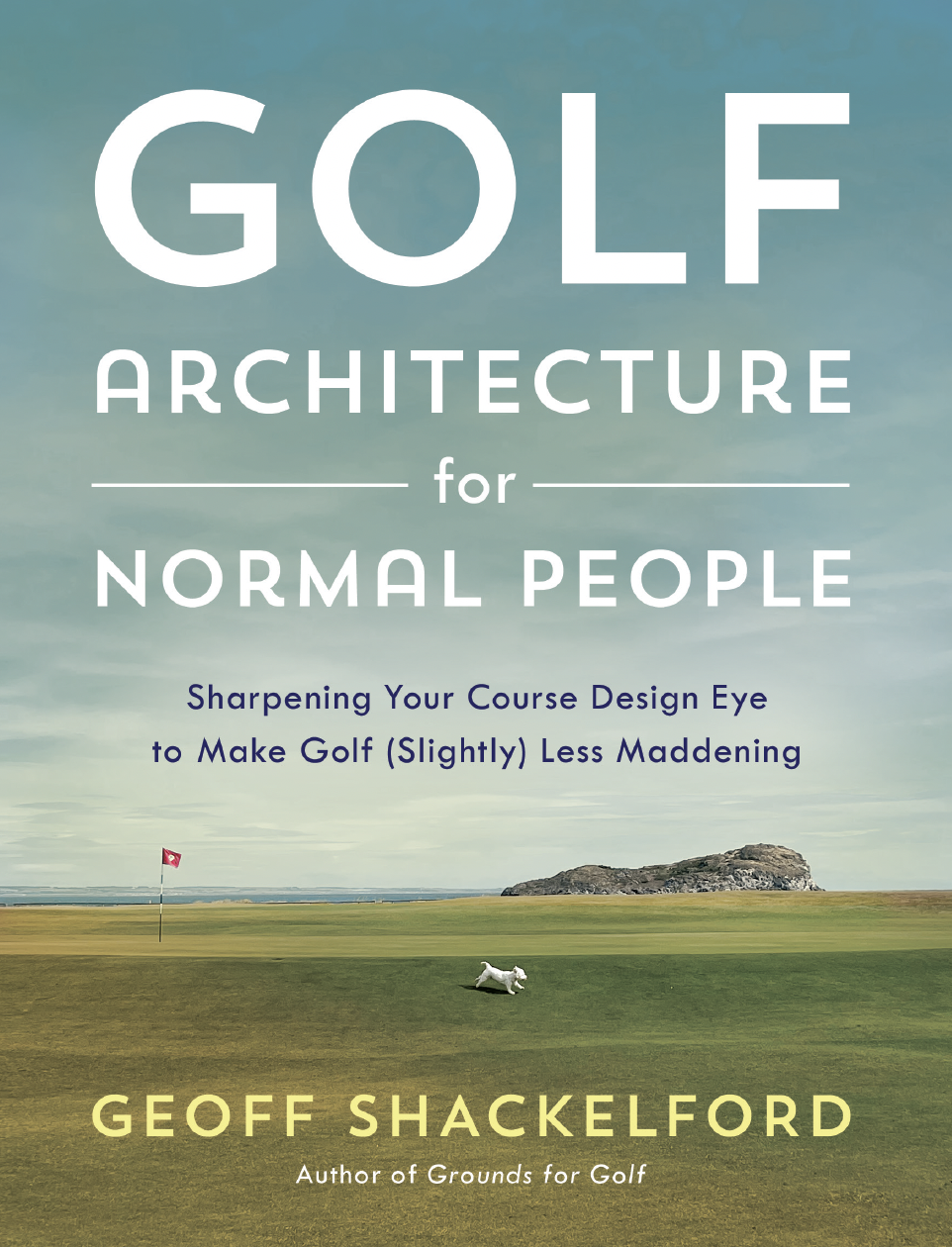...but at least I'm not a rally killer.
Yes, it seems my post last week on the latest musings from GolfDigest.com's "Bomb and Gouge" boys struck a nerve. So much so, that Bomb and Gouge dropped their unfunny shtik for an ultra serious shtik.
Though somehow I suspect this post was more Bomb (E. Michael Johnson) than Gouge (Mike Stachura)...
We're sure Geoff Shackelford is a nice man. He is certainly an accomplished writer and contributor to the design of a golf course. But personal attacks on our integrity are a sign of weakness and low self-esteem.
But see, they never get personal. No sirree.
And, of course, point-missing. One of his latest musings suggests that our recent posting on attacking the issue of u-grooves was somehow motivated by a desire to promote the golf equipment industry and defend the USGA's equipment decisions.
No, just the golf industry part. I think we're all in agreement that the USGA is indefensible at this point.
His overused lament is that the golf ball—that ongoing source of sturm und drang among the assembled panic-stricken, progress fearing golf Sanhedrin—needs to be dealt with in some draconian rollback, retrograde fashion.
It's a tired solution-less solution to a problem that does not exist.
I think it's time for the boys to visit The List, where they might note that it's not only little ole me suggesting something be done about this whole distance race, but people who actually matter like Jack Nicklaus, Ben Crenshaw, Tom Watson, Arnold Palmer and, wait, who's that down at the letter T saying he wished a line had been drawn by the USGA? Oh right, your boss!
But the bigger issue is what exactly are the Shackelfords of the world afraid of? That Myopia Hunt won't be able to host another U.S. Open? That Wannamoisett is too short to be appreciated by today's players? That the subtle beauty of the gently lofted mashie-niblick and the stymie are lost to eternity? The game is a living, growing thing, and just as I assume Mr. Shackelford, despite his bleating cries, no longer wears diapers, the game too must leave behind the things it no longer needs. We may be afraid of distance and the golf ball, but fear is borne and festers out of ignorance. Knowledge and rational thinking keep it in check.
Note to head pros at Myopia, Wannamoisett and anything else built before 1960: E. Michael Johnson says the game can leave behind the things it no longer needs and includes your courses!
In my conversations with officials at the USGA and the R&A, average driving distance of average golfers has maybe increased 10 or so yards over the last 15 years, to a whopping 210-215 yards. If 215 yard tee shots are obsoleting your golf course, it might be time to pick a new venue. An ultra-elite group of players may be hitting it farther, but 99 percent of the rest of us aren't. And when we roll the ball back next year or the year after, how soon until we have to do it again? And which of us is ready to play a shorter ball? And if the insanely easy to play golf equipment were such an advantage, everyone would be shooting 59 every day. The game finds a way to win.
So the equipment never really works, therefore we must continue to keep pushing the latest thing...for what reason again?
And because there is no need to bog this debate down with an endless dissertation, let's just mull some facts.
1. Currently, there are just two players on the PGA Tour who are averaging more than 300 yards in the tour's statistics that measure all drives. Two.
2. In the tour's driving distance average statistics, 20 players are averaging 300 or more yards. But here's the thing, only half of that number have ever won a tour event—EVER—and a third of that number (Woods, Couples, Love, Mickelson, etc.) have always been among the longest hitters. And here's one more thing, the number of 300-yard hitters is down from a year ago.
3. Driving distance has increased dramatically over the last 10 years. But it's flattened out in the last five. It's up about half a yard this year over last year. 18 inches. That's an increase of 0.17 percent. Is that the sky falling, or maybe something else?
They were doing so well there until point #3.
Flattened in the last five? Now, according to my media guide, the 2001 average was 279.4. And as of this week, the current Tour average is 289.7 (+10.3 yards). And the gain since 1996 is 23 yards, and nearly half of that has come in the last five years. Flattened?
Okay, the big wrap up:
The game survives when it chooses to grow.
Was that Darwin or Wind who said that? Sorry...
Equipment isn't making anyone a dominant player. And when it chooses to test elite players in the way we average golfers are tested on a regular basis, the game will be stronger because it has the power to consistently find ways to turn back all threats.
Maybe that will make sense if we put it in the Ali G translata...
equipment isn't makin anyone a dominant playa. and whun it chooses to da test elite players in da way we average golfers is tested on a regular basis, da game will be stronga coz it as da powa to consistently check ways to turn back all threats.
No, didn't help.












